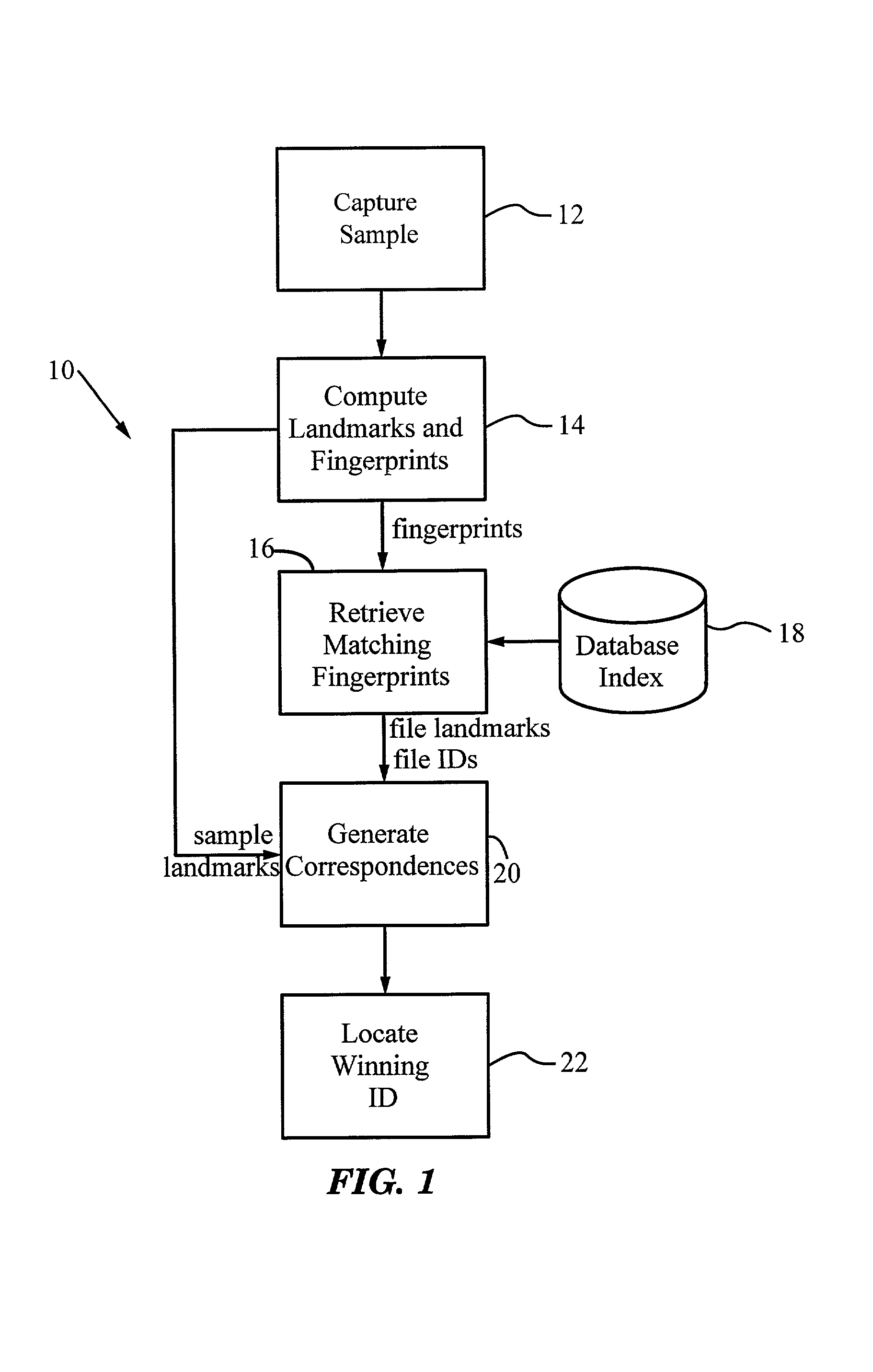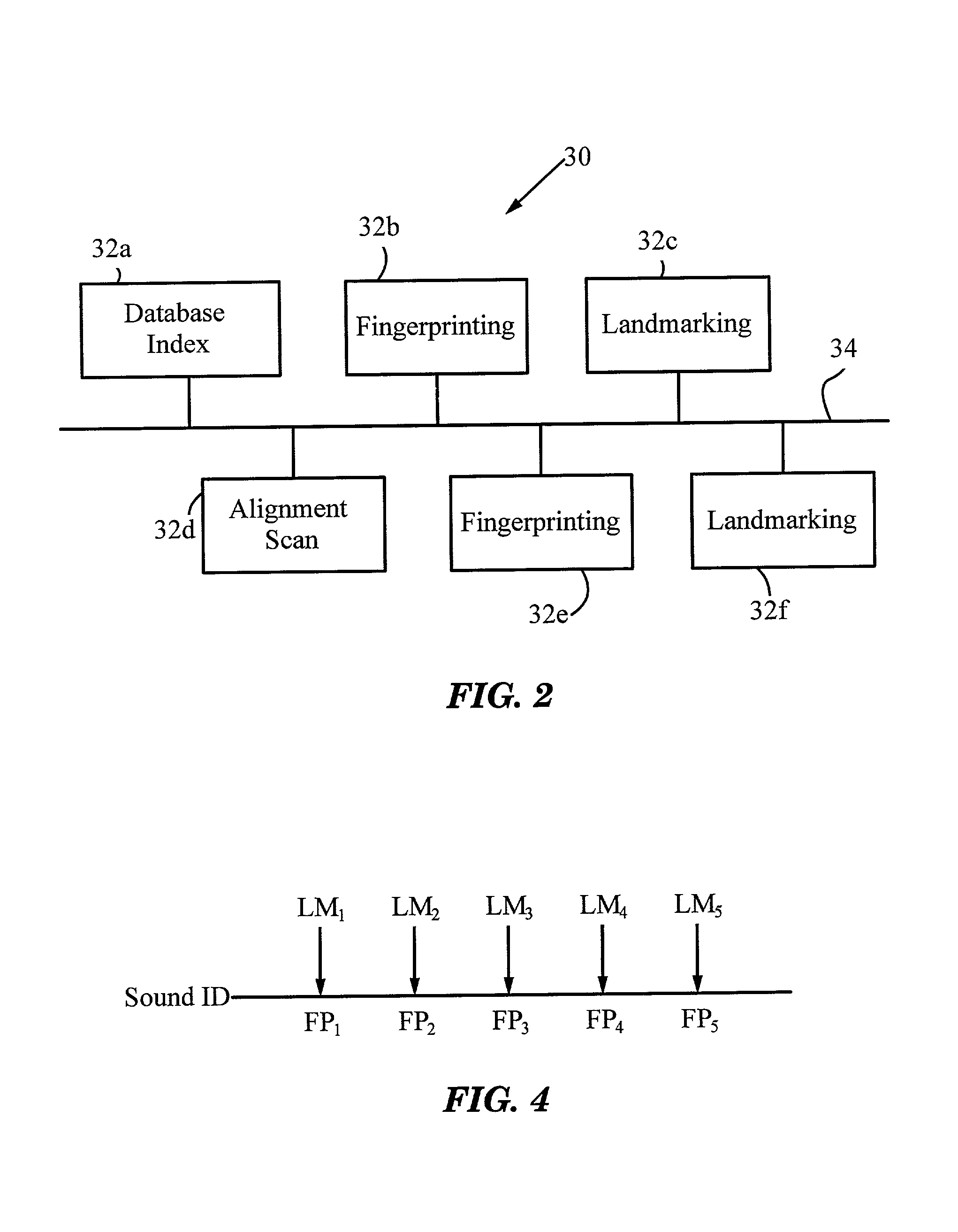System and methods for recognizing sound and music signals in high noise and distortion
a high noise and distortion technology, applied in the field of content-based information retrieval, can solve the problems of inefficiency and laborious labor of human operators in sort of continual or on-demand sound recognition, inherently limited methods to only radio stations, and special decoding devices are required
- Summary
- Abstract
- Description
- Claims
- Application Information
AI Technical Summary
Benefits of technology
Problems solved by technology
Method used
Image
Examples
example implementation
[0101]A preferred implementation of the invention, continuous sliding window audio recognition, is described below. A microphone or other source of sound is continually sampled into a buffer to obtain a record of the previous N seconds of sound. The contents of the sound buffer are periodically analyzed to ascertain the identity of the sound content. The sound buffer can have a fixed size or it can grow in size as the sound is sampled, referred to herein as sequentially growing segments of the audio sample. A report is made to indicate the presence of identified sound recordings. For example, a log file can be collected, or a display can be shown on a device indicating information about the music, such as title, artist, album cover art, lyrics, or purchase information. To avoid redundancy, a report can be made only when the identity of recognized sound changes, for example, after a program change on a jukebox. Such a device can be used to create a list of music played from any sound...
PUM
 Login to View More
Login to View More Abstract
Description
Claims
Application Information
 Login to View More
Login to View More - R&D
- Intellectual Property
- Life Sciences
- Materials
- Tech Scout
- Unparalleled Data Quality
- Higher Quality Content
- 60% Fewer Hallucinations
Browse by: Latest US Patents, China's latest patents, Technical Efficacy Thesaurus, Application Domain, Technology Topic, Popular Technical Reports.
© 2025 PatSnap. All rights reserved.Legal|Privacy policy|Modern Slavery Act Transparency Statement|Sitemap|About US| Contact US: help@patsnap.com



